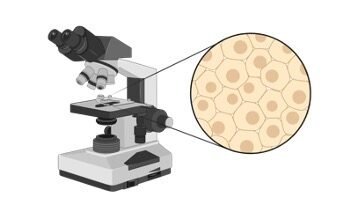Table of Contents
Phylum Chordata Definition
Chordate belong to the phylum Chordata that comes under the Deuterostomes kingdom that is characterized by the development of the anus that precedes the development of the mouth in the embryonic stage.
Chordata phylum comprises a large variety of organisms including invertebrates that lack a backbone and vertebrates that possess a backbone. This phylum includes 3 subphyla that are Urochordata, Cephalochordate, and Vertebrata. They generally have a bilaterally symmetrical shape though exceptions are there.
Phylum Chordata Characteristics
The following characteristics are exhibited by all the organisms that come under this phylum at some stage of their lives or during embryonic development.
Pharyngeal Slit: This can also be seen in invertebrates where they function in filter-feeding. Whereas in vertebrate fishes they develop into gill arches the function that supports gills. In other vertebrates like humans, these gill slits can only be seen in the embryonic stage and disappear later in development. This tissue may develop into eustachian tubes or jaws in terrestrial vertebrates.
Dorsal Hollow Nerve Cord: This dorsal hollow tube comprises nerve fibers that will develop into the CNS that consists of the brain and spinal cord. The vertebral column shields this nerve cord. The vertebral column consists of bones that form our backbone. Whereas in non-chordates the nerve cords are located either laterally or ventrally and are solid.
Notochord: This skeletal flexible rod is made of cartilage and functions to support the structural frame of the organism. It is present between the nerve cord and the digestive tube. The phylum derives its name from this rod. In vertebrates, it is the precursor of the spine or backbone.
Post-Anal Tail: This posterior elongation provides balance, helps the aquatic organisms in propelling themselves in water, and is utilized by certain terrestrial vertebrates in signaling or in finding a mate. This tail disintegrates as it shrinks and can be seen as a tailbone during embryonic development in apes and humans.
Chordata Subphylum
Vertebrata: This subphylum is also known as Craniata as the comprising organisms have a cranium case that protects their head and is known as a skull. They are also distinguished by the presence of a closed circulatory system, unique motor and sensory cranial nerves, internal organs, and a highly evolved brain. This subphylum includes amphibians, fish, mammals, reptiles, and birds. Their evolution can be studied using paleontological pieces of evidence like fossils as due to the presence of cartilage and bone, their remains were preserved.
Cephalochordata: Also called lancelets this subphylum comprises marine filter-feeding organisms. These have segmented small elongated and soft bodies due to which they did not fossilize well. They bury themselves in substrates and are seen in soft bottoms with exposed head regions consisting of tentacles that help in capturing the prey. Though they resemble fish, they do not have a brain, limbs, scales, and backbone like them. They have a greater number of pharyngeal slits than the fish.
Urochordata: This sub-phylum is also referred to as Tunicates and comprises sea salps and squirts. They are also soft-bodied organisms and thus their fossils are rare. These marine organisms are barrel-shaped filter feeders that are not segmented. The tail can be seen in the larval stage when it is free-living. But in adults, they lose the tail and attach to a substrate. In adults, the only chordate characteristic visible is the pharyngeal slits.
Phylum Chordata Examples
Lampreys: Belonging to subphylum vertebrates this chordate is a filter feeder during its larval stage. The adult of this jawless fish is a parasite that latches on to other fish with its oral disk that comprises teeth. They are not obligate parasites and the adults may live off the reserve they built in the larval stage. The adult exhibits external gills, nerve cord, cartilaginous skeleton, and a notochord. In the larval stage, they utilize a mucus-secreting organ that helps to trap the food in their pharynx and also show a post-anal tail.
Sea Squirts: This barrel-shaped organism belongs to the subphylum Tunicates. The larval stage resembles a tadpole and has a dorsal nerve, post-anal tail, notochord, and pharyngeal slits. In their adult stage, they are primarily filter feeders that have 2 siphons that are openings that are employed to draw water during filter feeding. They acquire their food phytoplankton by this method and drain the excess water through the other siphon.
Phylum Chordata Citations
Share












